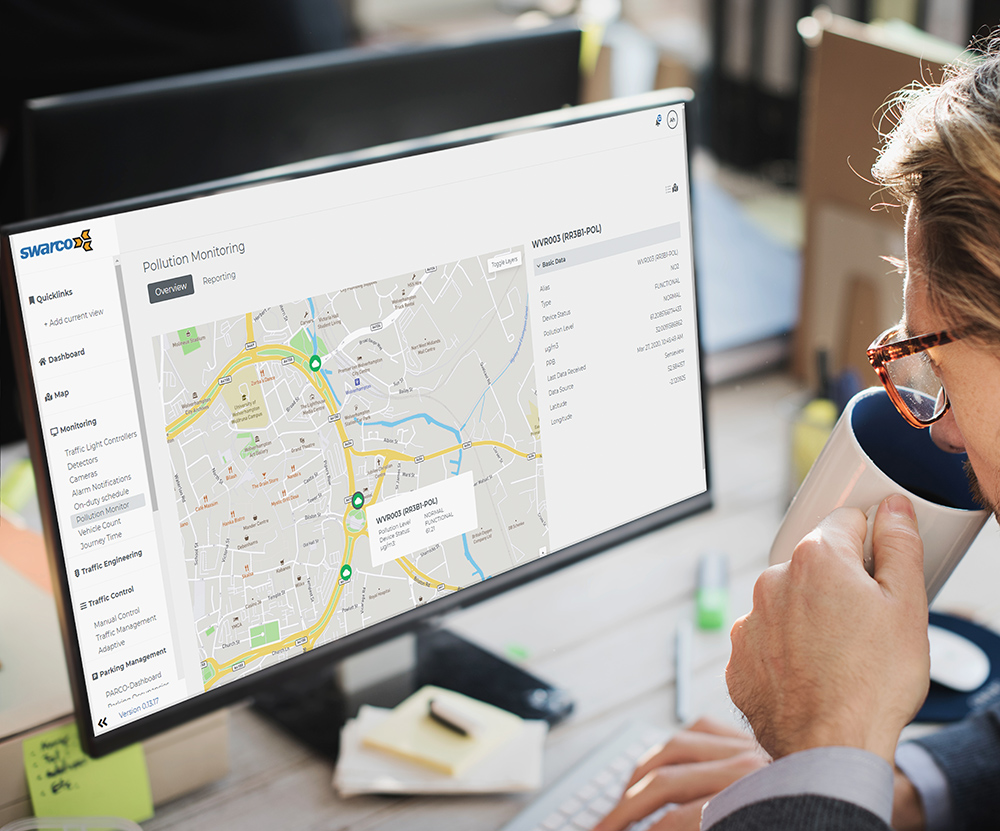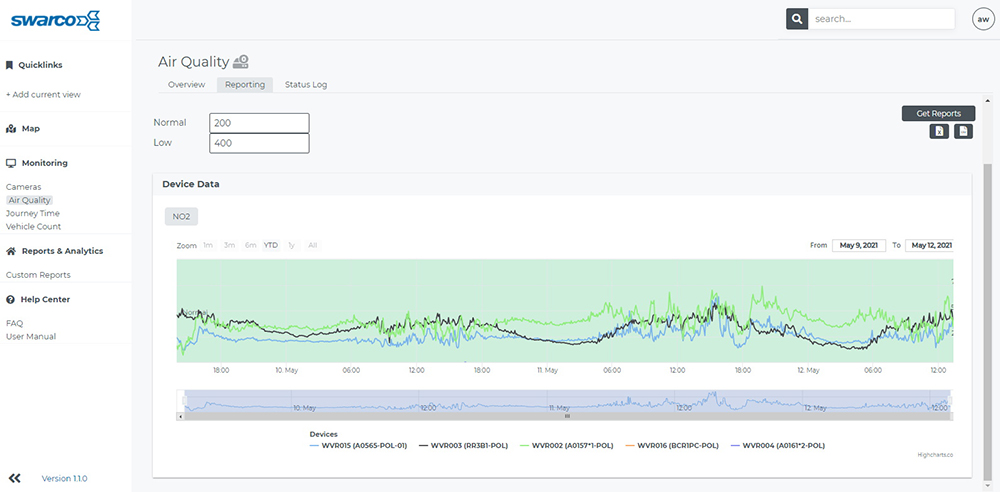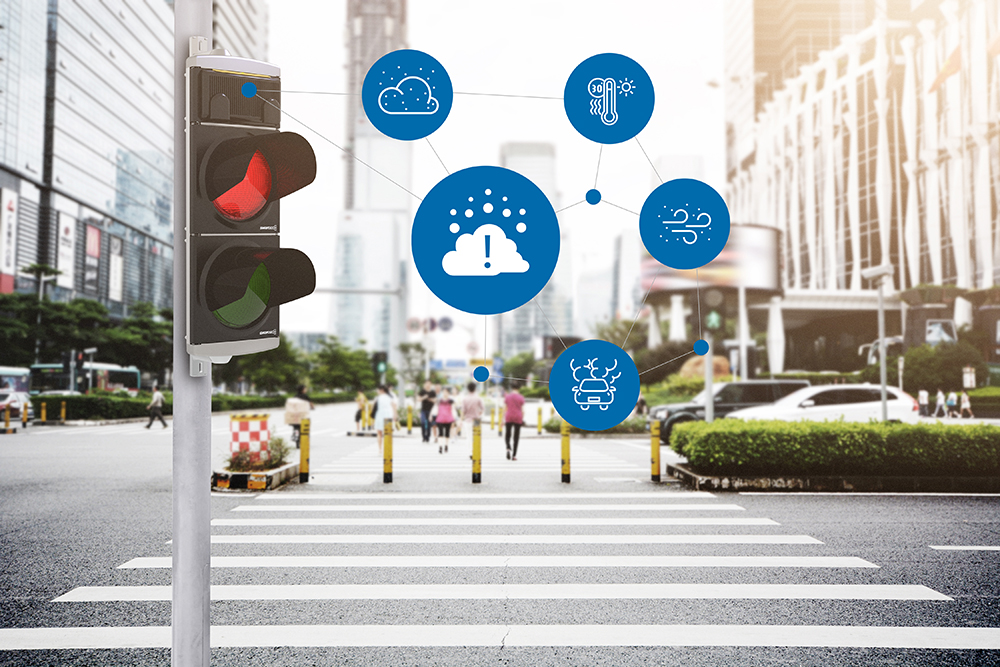
A policy framework that prioritises investments in transportation infrastructure could provide a significant impact to reducing air pollution. In addition, there is a transport mode shift and general digitilisation which cities today need to embrace. These new trends can become an asset and create a positive environmental impact, but only when handled strategically.
But first, let’s just quantify the stark reality of the damage caused by poor air quality.

Annually, air pollution costs the global economy five per cent of its gross domestic product (GDP). In 2020, global GDP amounted to about US$84.54 trillion so air pollution cost US$4.2 trillion!
The WHO reports that air pollution causes over seven million premature deaths worldwide each year. It’s a figure that could grow to nine million by 2060, if we don’t act now.
According to EPA estimates, one out of every six urban dwellers breathes polluted air where levels are higher than what WHO considers safe. The increasing number of urban dwellers will raise the pollution levels from various sources. This environmental phenomenon is expected to have a negative effect on the quality of life and human health.
City emissions account for approximately one third of carbon dioxide emissions across countries around the world. This also contributes to climate change problems including drought conditions being increasingly felt all over the planet.
"Out of the circa seven million premature deaths caused by air pollution, the transport sector accounts for around three million of them and is, therefore, the leading cause,” says Niko Stieldorf, Global Business Development Manager at Swarco. “The solution? Cities need to make car travel as sustainable as possible. Importantly, they need to also create a mobility strategy that helps get people out of their cars and onto alternative forms of transport that will get them where they need to go faster, cleaner, and safer than ever before."
Make an impact with ITS and urban mobility management
Cars have shaped the face of our cities worldwide. And they have done so for more than 100 years. The car became a symbol of wealth, freedom and changed the way we travel. However, unfortunately, we also had to get used to traffic jams, air pollution, noise, and car accidents.
For a long time, traffic management only focused on improving the driving experience itself. At the same time, public transport, cyclists, and even pedestrians were subordinate to cars. But this has changed in recent years - a development that is rapidly gaining momentum in 2021 due to the trend towards more liveable, sustainable, and smarter cities. Showcases of this are cities like Amsterdam, which is a pioneer in micro mobility due to its long cycling tradition.
Intelligent transport systems (ITS) with modern urban mobility management software enables cities to identify pollution caused directly by car traffic and analyse the data to make informed decisions. One major contributor to increased pollution levels is that 30 per cent of all traffic in city centres are actively looking for a free parking space. These cars can easily be guided to available parking spaces by using a parking management system, which improves the traffic flow overall. Combined with an air quality monitoring system, cities can make strategic decisions on where and when these kinds of investments should be made.
Modern urban mobility management systems harness a variety of data sources that are already available to the public. These sources should include, among others, national and regional weather forecasts, real-time traffic data, and historical data. In addition to traditional traffic sensors, they can use various environmental sensors measuring air quality, temperature, and humidity. These data points can be used to evaluate the current traffic conditions and provide a baseline data set. With more camera-based sensors being added, it is possible to collect more data on our road transport networks.
"Being able to collect and analyse data on other factors such as CO2 or NOx, travel times, and traffic conditions are very important in managing pollution levels. To ensure that the data is as comprehensive as possible and to provide city managers with a holistic view, it is also important to establish global data-sharing arrangements with third parties," says Stieldorf. "This eliminates the need for the operators, or the various third parties, to deal with cumbersome and complex data sets. It also allows local entrepreneurs to easily implement their own smart city solutions," Stieldorf adds.

Utilise transport mode shift to your benefit
Urban mobility is a sector that is undergoing significant change which will have an impact on the way society operates. The future is multimodal and various social, environmental, and technological factors are going to have an impact on how people and goods are transported.
Cities need to accept the change and strategically take actions to react to the market and proactively prepare for the new trends. Scalable solutions that let cities enable new functions, test innovations on a small scale to expand on a bigger scale when needed, contribute to traffic safety and air quality.
When new transport modes enter the market or travel behaviour changes, cities need to react and establish solutions supporting the change to ensure it doesn't actually create congestion leaving a negative environmental impact in urban areas.
Closely related to multimodal mobility is MaaS - Mobility as a Service. In many cities, travel information is available for different modes of transport. MaaS aims to provide a single ticket or application, for instance a smartphone app, to make as many modes of transport as possible both accessible and interconnected. This includes public transport, car or bike-sharing, taxis, scooters, and much more.
Often, however, this information - and the underlying services - are not connected, or when this happens it is usually on a local basis. Changing between modes of transport is correspondingly inconvenient. Some cities, however, have already found ways to provide a single ticket for a large number of transport modes. They have proven that MaaS can be a more sustainable and attractive alternative to cars! Efforts to deploy MaaS on a larger scale beyond local solutions are supported by the European Union, for example.
A number of projects are looking at the use of MaaS and will make this topic even more relevant in 2022. Traffic management plays a huge role here, in guaranteeing the quality of service and ensuring an equilibrium between the individual traveller's objectives and community objectives.
Use connectivity and automation to reduce traffic emissions
Cities using the available data and mobility management systems can truly benefit from the transport mode shift to make their cities greener and use this as a possibility to create comfortable journeys. Another challenge that can create new possibilities for a more sustainable future when applied strategically is connected, cooperative and automated mobility (CCAM). Not long ago, it was predicted that autonomous driving would be available within a few years. However, this has turned out to be much more difficult than originally expected. The potential benefits, however, remain and include increased safety, improved efficiency, and reduced environmental impact.
 Instead of introducing autonomous driving immediately, the general focus is shifting to CCAM. This will gradually make cars smarter and they will communicate with each other, other road users, and the infrastructure. The result will be an improvement to safety and efficiency and ultimately enable the large-scale introduction of autonomous driving. Green Light Optimal Speed Advisory (GLOSA) is a good example of a CCAM element. It enables vehicles approaching intersections to be aware of the traffic light change, improving driver comfort while leading to smoother traffic flows and reduced fuel/electricity consumption.
Instead of introducing autonomous driving immediately, the general focus is shifting to CCAM. This will gradually make cars smarter and they will communicate with each other, other road users, and the infrastructure. The result will be an improvement to safety and efficiency and ultimately enable the large-scale introduction of autonomous driving. Green Light Optimal Speed Advisory (GLOSA) is a good example of a CCAM element. It enables vehicles approaching intersections to be aware of the traffic light change, improving driver comfort while leading to smoother traffic flows and reduced fuel/electricity consumption.
Many cities around the world are already testing advanced technologies to smooth traffic flows because one of the most significant factors for high pollution levels is inefficient traffic flows at intersections. When standing still, drivers get distracted by their phones, food, conversations, or other distractions. When the traffic light switches to green, the distracted driver doesn't react and can create a gridlock cascade. CCAM solutions such as traffic light exchange, notify the driver about the traffic light switch from red to green so they can prepare the engine, start driving simultaneously, letting more cars cross the intersection. If, or rather when, the majority of vehicles are equipped with such technology, traffic flows through intersections will greatly improve, reducing unnecessary emissions.
The first step for the future
Enabling these kinds of functions with an urban mobility management system is already possible, and it prepares our cities for another change yet to come - fully autonomous cars.
"ITS will not solve bad air quality alone,” says Niko Stieldorf. “There are many other actions cities need to take. A good functioning Intelligent Transport System combined with an urban mobility system enabling city managers to understand the holistic view of the whole city is a good start. A strategy based on relevant data helps to change the behaviour of travellers, and with modern solutions, both small, as well as large cities can afford the technology for their needs."
Sponsored content produced in association with Swarco





